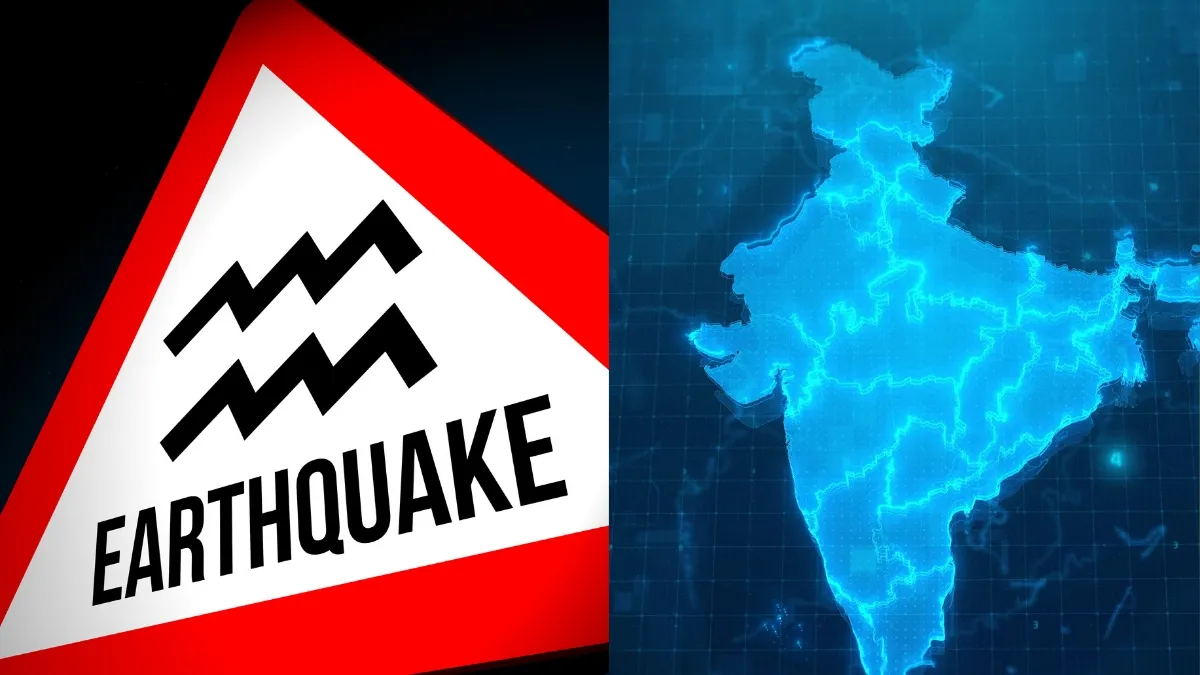- By Aditi Priya Singh
- Mon, 17 Feb 2025 12:19 PM (IST)
- Source:JND
Top 10 High-Risk Earthquake Zones In India: The capital city Dof elhi felt strong tremors as the earthquake hit on February 17, 2025, at 5:36 AM. India's varied geology makes it vulnerable to seismic activity; earthquakes can occur in about 58% of its land area. The Bureau of Indian Standards identifies four seismic zones. There are some high-risk areas in India but before that let's take a look at the details of how India is divided into four seismic zones based on earthquake risk:
Zone II (Low Risk)
This area, which includes stable areas like Karnataka, portions of Telangana, and central India, is subject to mild tremors.
Zone III (Moderate Risk)
Urban cities such as Kolkata, Chennai and Mumbai are notable but not very destructive earthquakes here.
Zone IV (High Risk)
This includes major cities like Delhi, Himachal Pradesh, and portions of Bihar. Strong tremors occur in some places, and there may be structural damage.
Zone V (Very High Risk)
The Andaman and Nicobar Islands, Gujarat (Kutch), the Northeast, and the Himalayan region are among the most earthquake-prone regions. These areas are vulnerable to powerful, catastrophic earthquakes.
Top 10 High-Risk Earthquake Zones In India
 Top 10 earthquake-prone zones in India (Image: Canva)
Top 10 earthquake-prone zones in India (Image: Canva)
Below is the list of the top 10 high-risk regions for earthquakes. Take a look.
1. Northeastern States (Zone V)
Zone V includes the following areas Guwahati in Assam, Nagaland, Meghalaya, Manipur, Mizoram, Tripura and Arunachal Pradesh. Because of the tectonic plate collision between the Indian and Eurasian plates, it is extremely vulnerable to powerful earthquakes.
2. Himalayan Region
Due to continuous tectonic movements, the entire Himalayan belt from Jammu & Kashmir to Himachal Pradesh and Uttarakhand is vulnerable to large earthquakes with a magnitude of greater than 8.0.
3. Rann of Kutch, Gujarat
Situated in Zone V, this region was devastated by an earthquake in 2001. The region's seismic sensitivity is a result of its distinct geological features.
4. Delhi-NCR
The capital city is located in a high-risk location, Zone IV. It requires strict building rules and emergency planning due to its closeness to active seismic faults.
5. Mumbai, Maharashtra
Mumbai lies in Zone III, which means that earthquakes are a moderate risk. There are also worries about possible tsunamis after seismic occurrences because of its coastal location.
6. Chennai, Tamil Nadu
Chennai, which was formerly categorised as Zone II, has been upgraded to Zone III, which indicates a considerable seismic risk. Potential vulnerabilities are increased by urbanisation and population density.
7. Koynanagar, Maharashtra
The 1967 earthquake is one of the seismic events that have occurred in this Zone IV area. One reason for the seismicity is the reservoir of Koyna Dam.
8. Bihar
Due to their Zone V status, parts of North and Middle Bihar are extremely vulnerable to earthquakes. This area has seen substantial damage from previous earthquakes.
9. Sikkim
This state in the northeast is completely in Zone IV, which means there is a high risk of earthquakes. Its susceptibility is exacerbated by its placement within the Himalayan range.
10. Andaman and Nicobar Islands
Andaman and Nicobar Islands are located near strong seismic fault lines, making them vulnerable to regular earthquakes and falling within Zone V.
ALSO READ: Top 10 Highest Earthquake-Prone Countries In The World: China, Japan, India And Others

